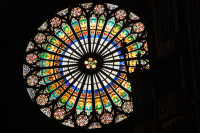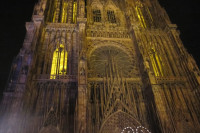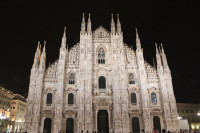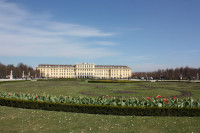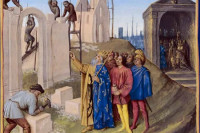Travel
Glossary: cathedrals in the Middle Ages
Ambulatory: Part of the church behind the choir which holds chapels.
Angevin: relating to the Province of Anjou- Region from 1154-1399 taken by the Plantagenets
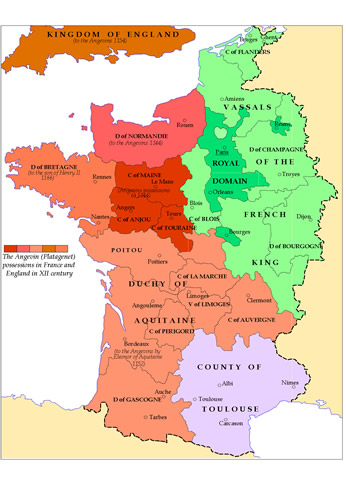
Lotroo-Angevin Empire 1154
Apse (chevet): describes an arch either semi circular or polygonal at the end of the choir
Basilica: old Roman Catholic church built in a shape of a rectangle
Buttress: a masonry structure that reinforces a wall. Flying buttress (arc boutant) is a structure which looks like an arch and reinforces a wall.
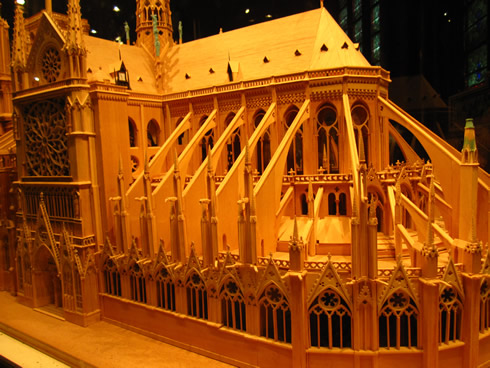
Notre Dame of Paris Cathedral - outside and buttresses
Cathedral: sacred site. It is the seat of the bishop, leader of the Catholic church, or archibishop. The leader sits on the thrown called the cathedra.
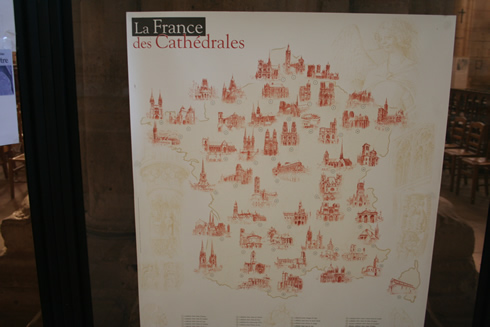
Map of the French cathedrals
Choir: part of a church at the end passed the chancel where the prepare the communion and where people stands or sits to sing. Normally in the east part of a church
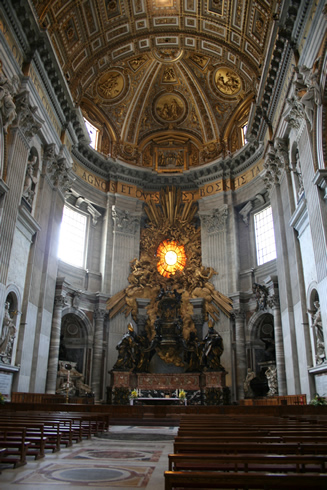
Choir in the Basilica St. Peter in Rome
Crypt: vaulted room under a church used as a burial or prayer room.
Domaine: an estate, land you own
Gothic: architecture style from the Middle Ages
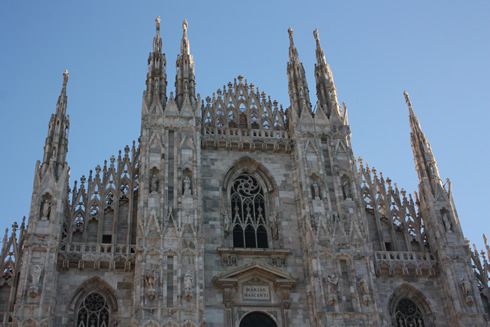
Facade of the Milan Dome
Gothic styles:
- Gothic Primitif 1150 to end of 12th century
- Gothic Classic/Early Gothic end of 12th century to 1230
- Gothic Rayonnant/ Middle Gothic in France and called Decorated style in England 1230/50 to 1350/70
- Gothic Flamboyant/Late Gothic in France, Spain and Portugal called Perpendicular or rectilinear style in England 1350 to 1520
Gothic Flamboyant: represents the last style of the Gothic from 1350 to 1520 in
France, Spain and Portugal. In England one talks about Perpendicular style or rectilinear style. It is the time of fan vaults and triforium disappears. Also time for Hallenkirchen.
Hallenkirchen (Eglises Halles): relating to naves of equal height in a church. Style started in Germany in the late Gothic (SonderGothic)but there are also some
Hallenkirchen in France.
Middle ages: period of time in history going from the 5th century to the 15th. It saw many famines, wars and the Great Plague.
Nave: long part of a cathedral which goes from the front door to the altar. That’s where the people sits to listen to the priest.
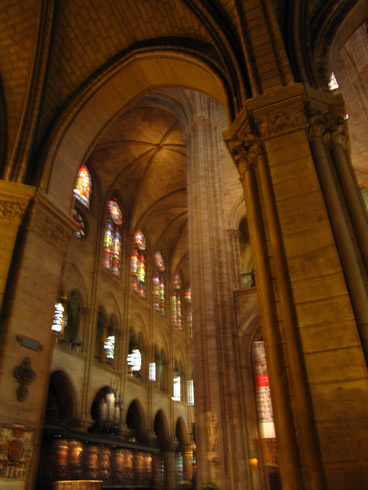
View of the nave - Cathedral Notre Dame of Paris
Rib vaults (ogives): vaults crossed to help carry the weight of the church. Pillars are used.
Perpendicular style: English architecture style corresponding at the Late Gothic
Plantagenet: is about the Plantagenet kings, describes the Plantagenet architecture
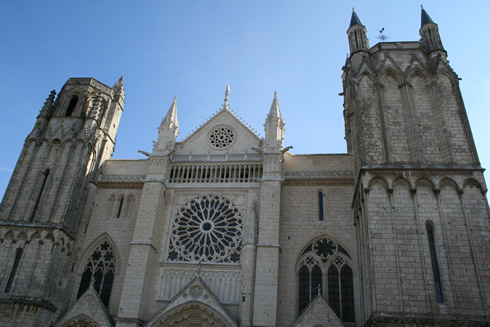
Poitiers Cathedral St. Pierre - Plantagenet Gothic style
Rayonnant: 1230/50 to 1350/70 – style of the Middle Gothic. It corresponds to the Decorated style in England.
Romanesque: architecture style of the Middle Ages before the Gothic going from the 9th to the 12th centuries. It is characterized by thick walls, rounded arches and the use of piers and columns.
Transept: describes a nave, dividing it near the chancel into two short arms. It cuts the main nave and makes it look like a cross.
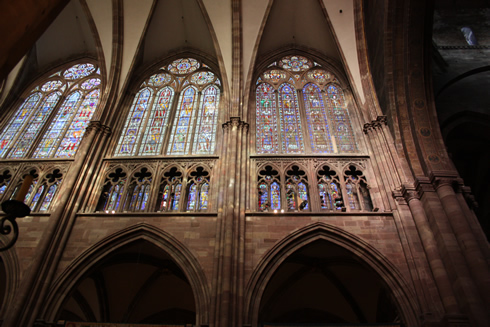
Triforium, vaults and stain glass windows of a Gothic cathedral
Triforium: seen during the Gothic. It is a small passage like an arcade or gallery above the arches of a choir or nave.
Vault: is an archal structure on a ceiling or a roof. There are many types
of vaults like rib vaults or fan vaults. Sometimes buttresses are built
to help support the heavy weight.

